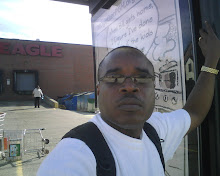Mother earth struck again. This time with an earthquake measuring 5.4 on the Richter scale in California. The damage was minimal. Part of the experience was captured on video during the taping of the Judge Judy show. During the quake, it was clear and confirmed by the judge, the occupants in the room were at a loss as to what to do. Some looked for the nearest exit and fled and others stood there paralyzed. The Judge fled from the bench. On interview she said,"my grandmother told me to always be ready and stay ready." The willingness of people to rely on indigenous knowledge during disasters is more often the case than not. The tendency to rush for the exits is also real. The video confirmed the instinctiveness with which people respond in the face of danger or disaster. However, conventional wisdom recommends that people stay where they are. Imagine what would have happened had the buildings collapsed as they did in China earlier this year. An organized exit out of the building into an open space is the best approach to response during an earthquake. However, regular drills and education as to what to do during an earthquake remains the best preparation option. The Judge was right. Despite the persistent exposure to earthquakes in California, the video clearly showed that as a group they were ill prepared and did not know what to do. It may be an indictment on the state or the people. These smaller quakes are dress rehearsals for larger ones. This time, it was an indication that the lessons of past earthquakes may still need to be learned.
Exits have to be clearly located and marked and one cannot assume that structures are strong enough to withstand quakes and therefore capable of protecting people. People are to be evacuated out of a building as soon as possible. In this case, I am pleased that all well that ends well.
A few weeks ago, I completed a GIS scenario of the Oxnard region, California focusing on the impact a tsunami would have had on educational facilities in the area. The scenario showed that about 30 school buildings would be inundated. Such information is essential as part of preparation and response in the event of a marine quake and resulting. The scenario also showed that several emergency facilities would so be inundated. The map serves as a useful tool for planning and future locations of the public facilities. Nothing trounces indigenous knowledge and this remains a vital part of the instinctive response to disasters. Indigenous knowledge was critical in the saving lives during the Indonesian Tsumani which killed thousands.
Wednesday, July 30, 2008
Subscribe to:
Comments (Atom)
